ARIA/DIAMOND FUZZ(IBANEZ STANDARD FUZZ)
This is a fuzz pedal I own, labelled Aria/Diamond Fuzz.
Features:
- Fuzz Depth slider
- Balance (volume) slider
- Tone Change switch
- On/Off switch
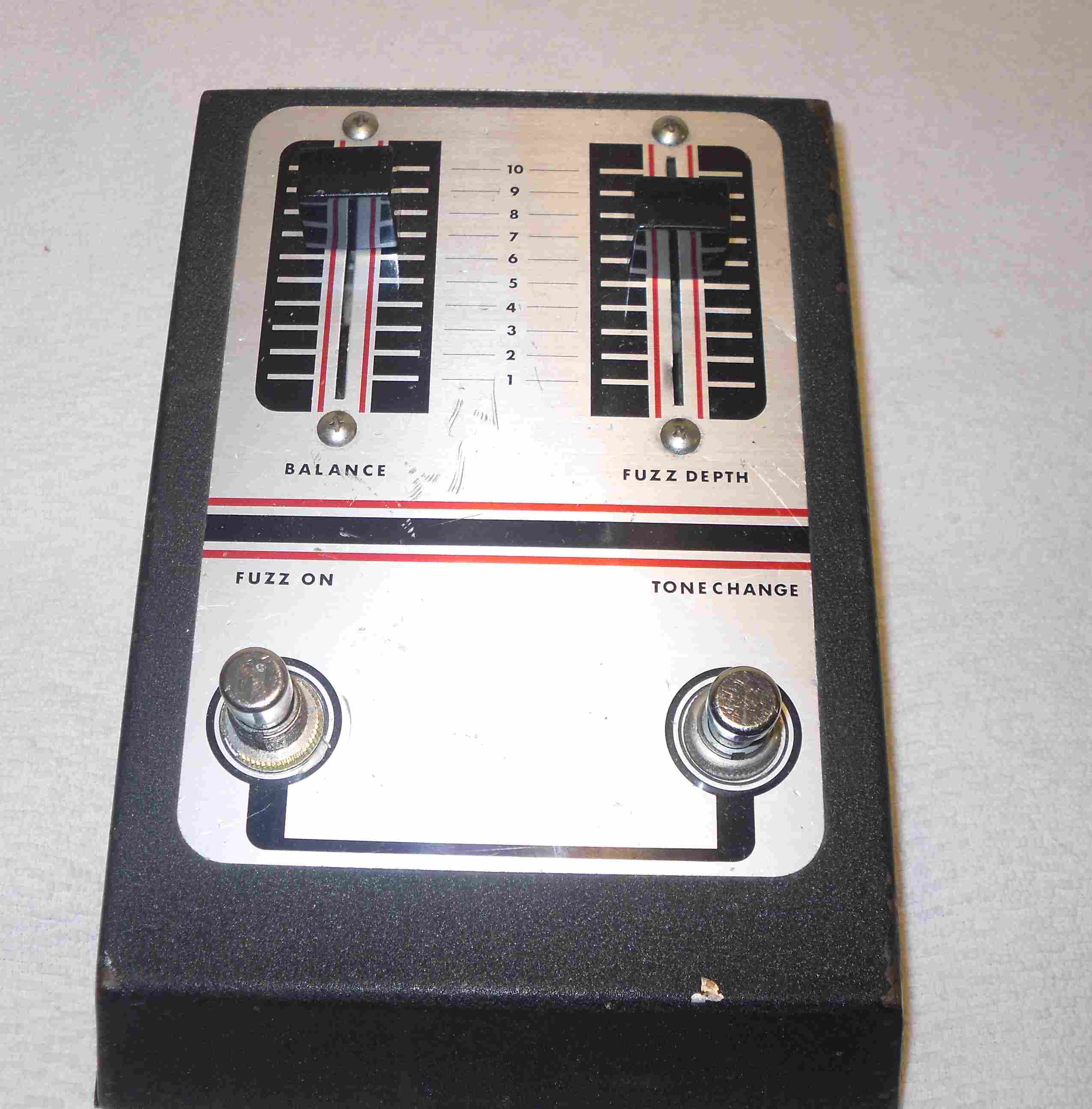
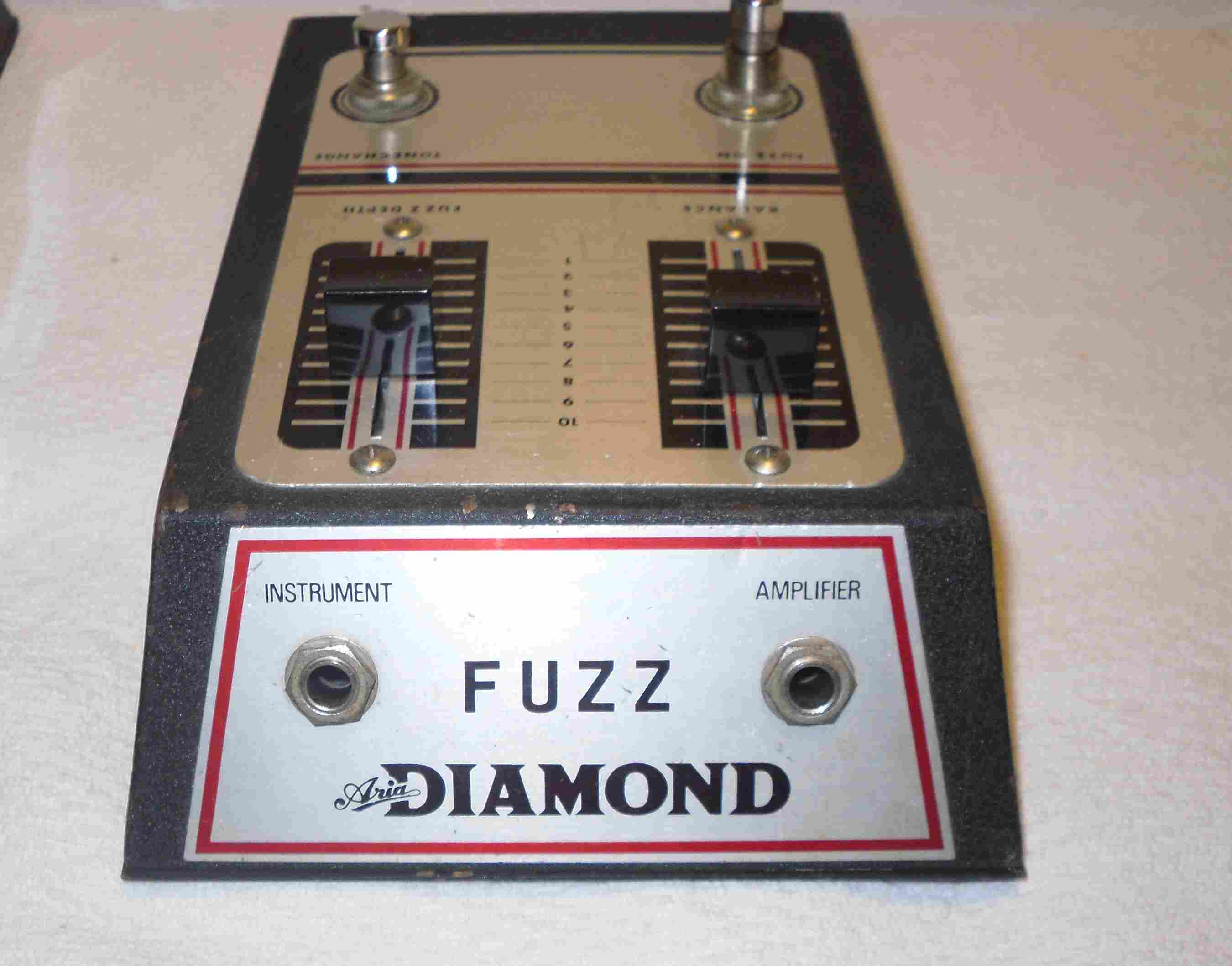
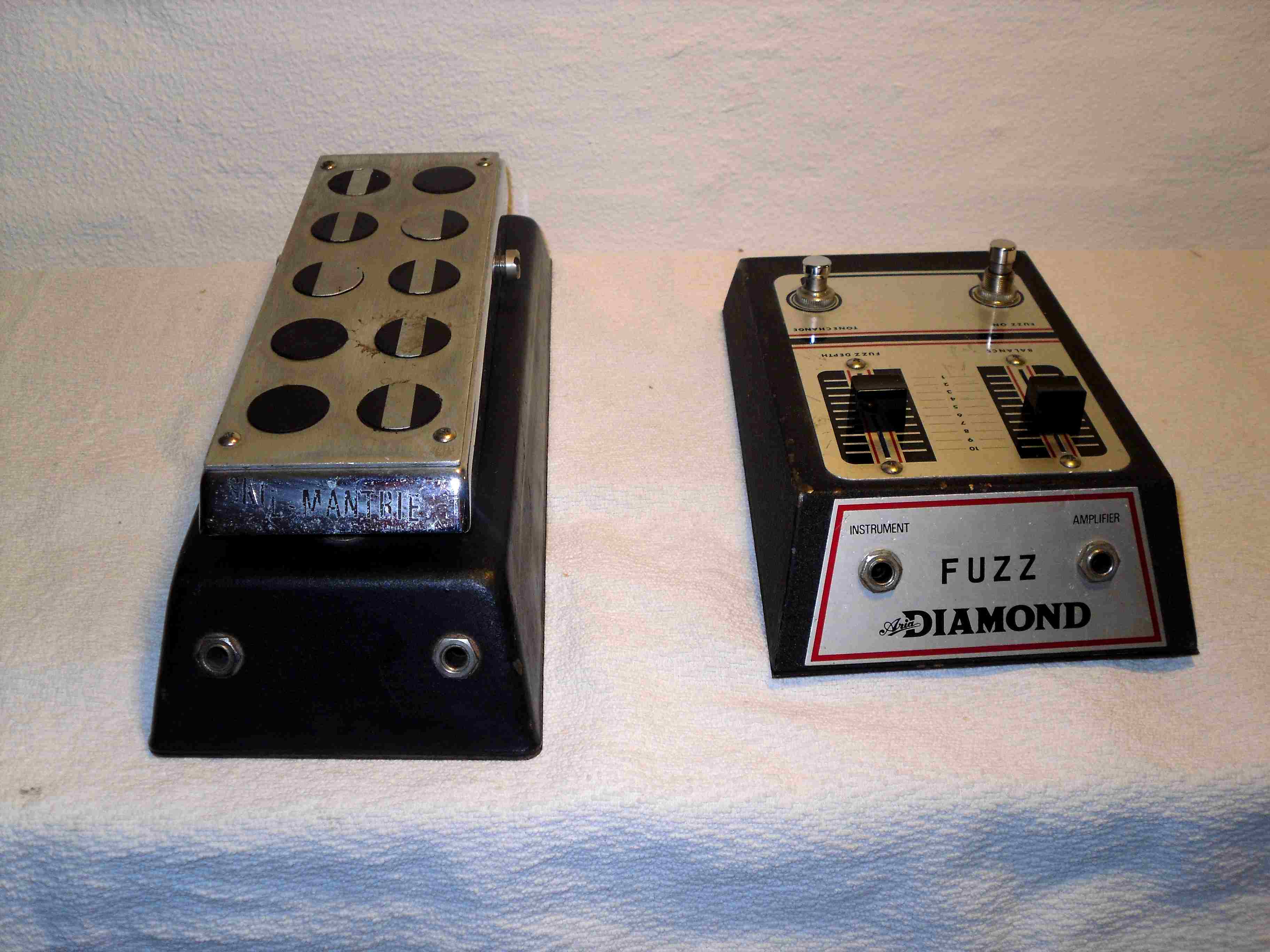 Until recently I knew of Aria guitars and Diamond organs from the 70'ies, but nothing about the label and its effects units. But that has changed.
The fuzz pedal was given to me by a friend who didn't want it. Probably because it has about the nastiest and most evil kind of fuzz imaginable.
It sounds like it was designed to punish peoples ears, or their amplifiers. Really sixties and early glam rock stuff. (Listen to the samples below). For guitar it will rip your speakers apart if you turn it up too loud. Many fuzz and distortion units produce pleasant harmonics when you combine strings. But if you play too complex harmonics on this one
it will go straight into harmonic chaos. And sometimes this is exactly the type of sound you want for a truly old school moment.
The pedal features a "Tone Change" switch, which will change from mid-range emphasis to bass and treble emphasis. Both settings sound nasty, in their own way. So, initially I found it hard to use, except for the occasional special case, where odd distortion is just what you need (which is of course a totally valid reason to own such a pedal!!).
Then I tried it on my Rick bass. I always wanted to do that, ever since I heard Hugh Hopper play fuzz bass in Soft Machine. To my surprise the voicing was prefect for bass guitar, and was in fact very similar to the Hugh Hopper sound. A lot of low end comes through, and the clipping seems much more pleasant when applied to the bass guitar. I also tried adding a phaser after the fuzz with the bass which is an even sweeter combination. The Rickenbacker 4001 => Aria fuzz => EH Small Stone is a combination I have used several times on recordings, on both "Fin de Siecle" and "Tales of Ardour and Deceit". It is powerful in a mix in much the same way as a Moog Taurus pedal.
Then I tried it with a synthesizer, inspired by Tony Banks use of fuzz on his early keyboards, and found that also this combination shines. I now use it regularly as a keyboard fuzz. When I play in our Genesis tribute band, I usually route a DX7 => Aria Fuzz => MXR 100 Phaser - the DX7 programmed with sounds like the RMI Electrapiano - for emulating early Genesis Tony Banks sound. Tony frequently sent his keys through a Fender Blender fuzz. Listen to Return of the Giant Hogweed for a very prominent example.
The fuzz pedal also creates magic applied to a MiniMoog. Tweaking the Moog filters creates dramatic harmonic changes though the fuzz.
Until recently I knew of Aria guitars and Diamond organs from the 70'ies, but nothing about the label and its effects units. But that has changed.
The fuzz pedal was given to me by a friend who didn't want it. Probably because it has about the nastiest and most evil kind of fuzz imaginable.
It sounds like it was designed to punish peoples ears, or their amplifiers. Really sixties and early glam rock stuff. (Listen to the samples below). For guitar it will rip your speakers apart if you turn it up too loud. Many fuzz and distortion units produce pleasant harmonics when you combine strings. But if you play too complex harmonics on this one
it will go straight into harmonic chaos. And sometimes this is exactly the type of sound you want for a truly old school moment.
The pedal features a "Tone Change" switch, which will change from mid-range emphasis to bass and treble emphasis. Both settings sound nasty, in their own way. So, initially I found it hard to use, except for the occasional special case, where odd distortion is just what you need (which is of course a totally valid reason to own such a pedal!!).
Then I tried it on my Rick bass. I always wanted to do that, ever since I heard Hugh Hopper play fuzz bass in Soft Machine. To my surprise the voicing was prefect for bass guitar, and was in fact very similar to the Hugh Hopper sound. A lot of low end comes through, and the clipping seems much more pleasant when applied to the bass guitar. I also tried adding a phaser after the fuzz with the bass which is an even sweeter combination. The Rickenbacker 4001 => Aria fuzz => EH Small Stone is a combination I have used several times on recordings, on both "Fin de Siecle" and "Tales of Ardour and Deceit". It is powerful in a mix in much the same way as a Moog Taurus pedal.
Then I tried it with a synthesizer, inspired by Tony Banks use of fuzz on his early keyboards, and found that also this combination shines. I now use it regularly as a keyboard fuzz. When I play in our Genesis tribute band, I usually route a DX7 => Aria Fuzz => MXR 100 Phaser - the DX7 programmed with sounds like the RMI Electrapiano - for emulating early Genesis Tony Banks sound. Tony frequently sent his keys through a Fender Blender fuzz. Listen to Return of the Giant Hogweed for a very prominent example.
The fuzz pedal also creates magic applied to a MiniMoog. Tweaking the Moog filters creates dramatic harmonic changes though the fuzz.
Origins of the Standard Fuzz
Still the origins of the Aria Fuzz pedal was a mystery to me, but the search for info about the subject has brought me a great deal of insight into the 70'ies fuzz manufacturing business:
I was on another browsing excursion for more info about my Ibanez 2402 double-neck, when I stumbled upon
this Ibanez brochure of pedals, and,
lo and behold, there was my fuzz! *) Totally reckognisable. ...that is, except the label on the rear panel
said Ibanez and not Aria/Diamond!?
With some further digging I concluded that the fuzz pedal is indeed identical to the pedal called the Ibanez Standard Fuzz. Suddenly lots of hits turned up on the web, as the Ibanez branded version seems to be a bit of a collectors item, and is even regarded a "classic".
The pedal produces what is referred to as an octave up effect to the fuzz. There is a family of effects that behave like that, which includes the Univox Super-Fuzz, Ibanez Standard Fuzz, Shaftesbury Duo Fuzz and Fender Blender. The Super-Fuzz and the Shaftesbury are identical with only minor parts values differing.
The Standard Fuzz circuit is also identical to the Univox Super-Fuzz, except the input stage has been changed to use one J-FET instead of two ordinary transistors. The rest of the circuit is the same. The Fender Blender is basically the same construction, but has some extra diodes added among other differences. But it is definitely
within the same family of circuits.
It is clear that all these pedals are derived from the same design. The original design seems to be the Unicord Super-Fuzz from 1968. The rest of them - except perhaps the Fender Blender? - must have been derived from this one. They all seem to have been built by the japanese company called Shin-ei, and then issued under a number of brand names, including Aria/Diamond, Ibanez, Bruno, Lord, Marlboro, Northland, Mac-Tone, Mica, Teisco, Shaftesbury and Selmer. I have not
yet figured out if the SuperFuzz itself was also manufactured by Shin-ei, but I strongly suspect it did. They all share identical circuitry and case, as far as I have figured out. The Unicord schematic I have seen from april 1968 seems to have been designed in New York. It would be interesting to know the story about the connection to the japanese manufacturer Shin-ei. A licensed manufacturer perhaps?
Now all the pieces fell in place. Hugh Hopper used a Shaftesbury Duo-Fuzz, Tony Banks used a Fender Blender. The sounds I produce with the Standard Fuzz will of course be very similar.
Furthermore, the fuzz and the wah circuits are also combined into another pedal, commonly called the "Standard Wau-Fuzz". The "Wau-Fuzz" seems to be a combination of the Standard Wah and the Standard Fuzz in one case. This pedal also seems to have been branded in the same manner as the fuzz, and was positively available as both Ibanez, Aria/Diamond and Selmer - and most probably also as any of the other brands as well.
*) As it happened, in the catalogue I also reckognized the wah pedal next to it as another no-name
pedal I own - identical to the Ibanez Standard Wah Wah. My wah pedal has
lost its nameplate, so it could be either an Ibanez Standard Wah or
an Aria/Diamond WP-1 Wah, or any of the other brandings of the same pedal. I
will never know. But I am content to know that it is a Shin-ei Standard Wau, and the label really doesn't matter.
Cloning the Standard Fuzz
I found two slightly different versions of the fuzz circuit for my pedal on the web. One is for the Standard Fuzz, the other for the Fuzz section of the Wau-Fuzz.
There are minor differences in the tone change section. I have not examined yet which one matches my pedal, but believe the Standard Fuzz circuit is correct.
I suspect that Shin-ei continuously adjusted component values, so different stomp boxes, even of the same brand, are not always identical.
I searched for the schematics, because I wanted to build a clone for my keyboards and keep the original at home. Both versions of the schematics are here. Both are fairly simple, and a clone can easily be made from this. So in the interest of the advance of nasty fuzz sound:
Ibanez Standard Fuzz:
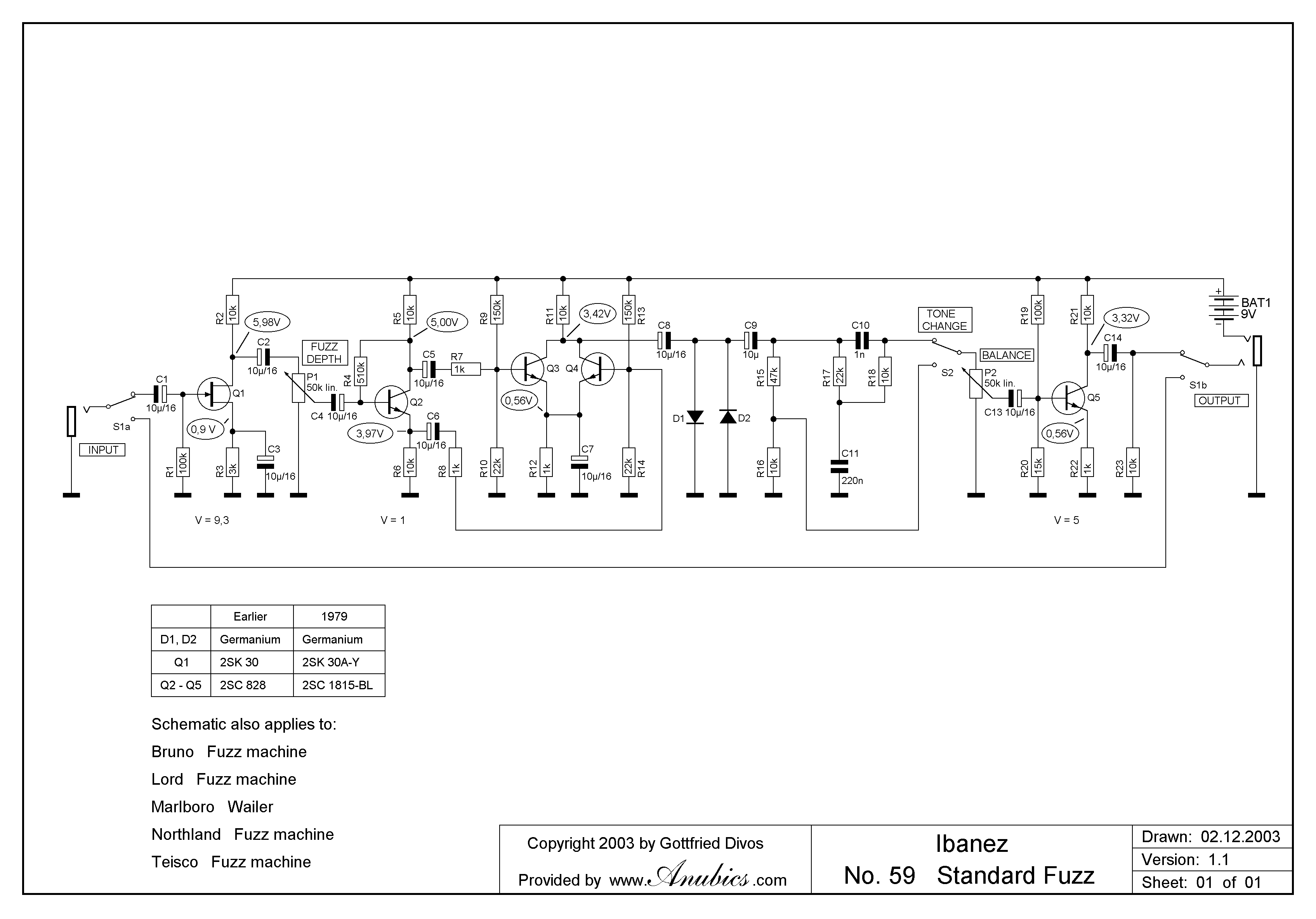
Ibanez Standard Wau-Fuzz:
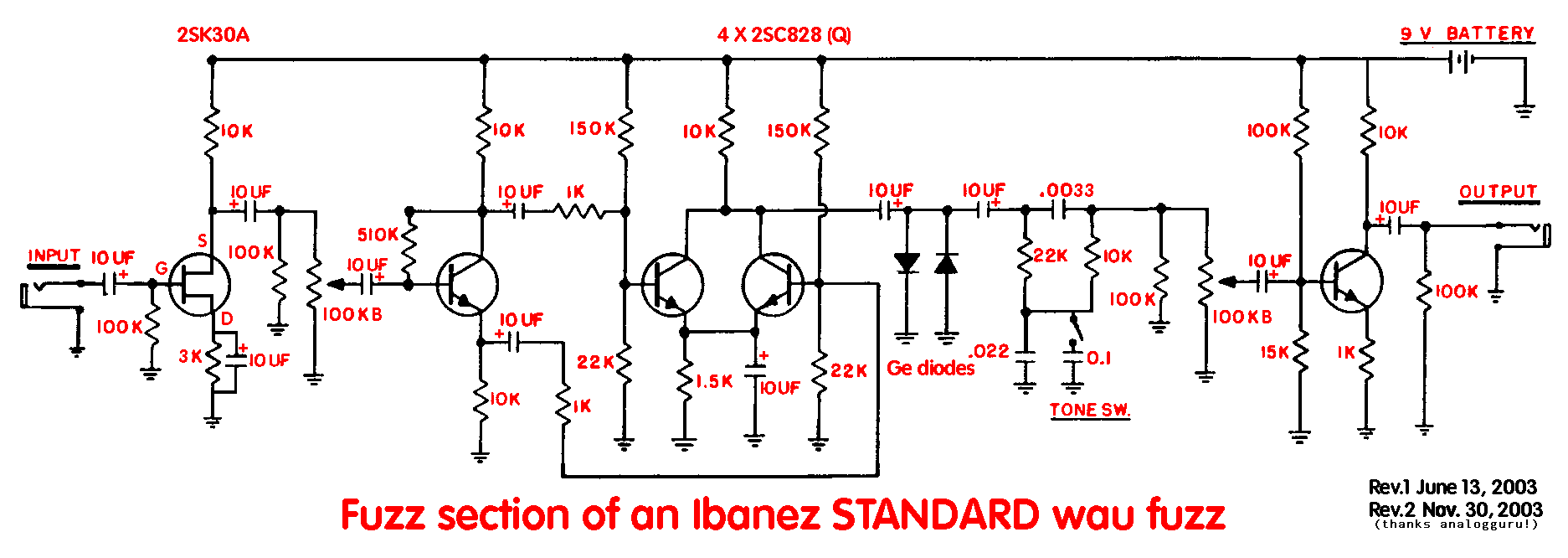 (The schematics are links to the tonehome.de site).
So I built my own clone of the Aria/Diamond/Ibanez Standard Fuzz. Going the
easy way, I opted for a vero board layout, and drew up a design, that looks
like this:
(The schematics are links to the tonehome.de site).
So I built my own clone of the Aria/Diamond/Ibanez Standard Fuzz. Going the
easy way, I opted for a vero board layout, and drew up a design, that looks
like this:
Vero board layout for building your own Standard Fuzz clone:
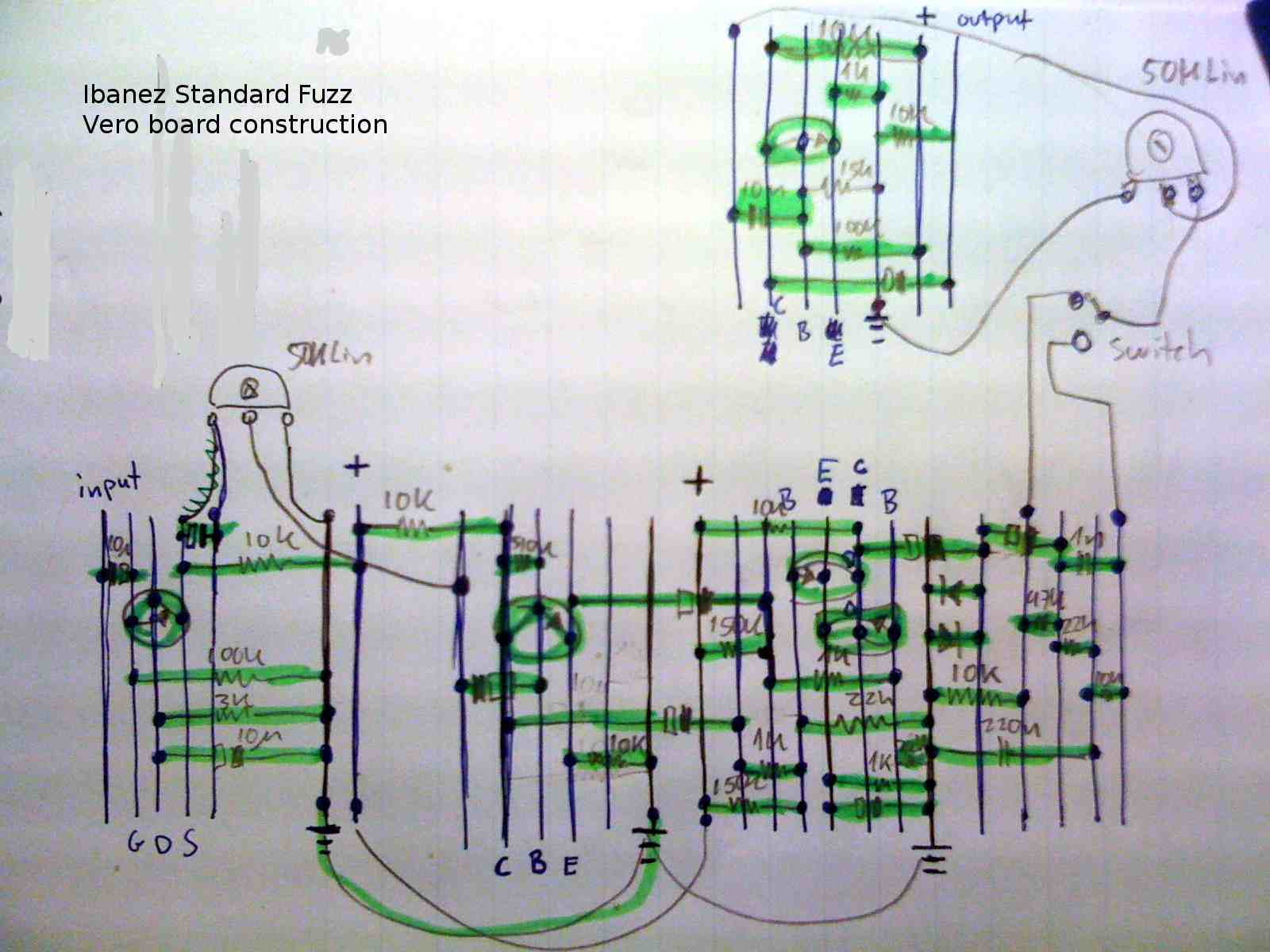 According to the schematics there are at least two revisions identified, with the difference mainly
in the transistor types. Earlier version have 2SK30 and 2SC828 types. These should be equivalent
to 2N3821 and 2N2222 respectively, and this is the revision I built.
The later revision uses 2SK 30A-Y and a 2SC 1815-BL, which could be replaced with 2N3821 and
2N3859A. I am not sure how much difference this really makes. Build it with transistor sockets, and
try switching transistors. I myself happen to have a bunch of old transistors that I salvaged many
years ago out of some antique 70'ies electronic equipment on its way to the dumpster.**)
So I happen to have some 2N2222, which made me go for revision 1.
The2N3821 is a J-FET, still available, and for the diodes I found a couple of OA5
that I had also salvaged.
And the result? It sounds almost exactly like the original! Just as nasty and
destructive. My copy has slightly less low end. It could be a matter of aging components in the original, or perhaps a few
changed component values from Shin-ei? Otherwise it has the same crazy (in)harmonic behaviour. I will sample it later....
**) When I was 15, I was interested in electronics
but had no money. So I sat many nights unsoldering transistors from old PCB boards. The things you do when you are young!
According to the schematics there are at least two revisions identified, with the difference mainly
in the transistor types. Earlier version have 2SK30 and 2SC828 types. These should be equivalent
to 2N3821 and 2N2222 respectively, and this is the revision I built.
The later revision uses 2SK 30A-Y and a 2SC 1815-BL, which could be replaced with 2N3821 and
2N3859A. I am not sure how much difference this really makes. Build it with transistor sockets, and
try switching transistors. I myself happen to have a bunch of old transistors that I salvaged many
years ago out of some antique 70'ies electronic equipment on its way to the dumpster.**)
So I happen to have some 2N2222, which made me go for revision 1.
The2N3821 is a J-FET, still available, and for the diodes I found a couple of OA5
that I had also salvaged.
And the result? It sounds almost exactly like the original! Just as nasty and
destructive. My copy has slightly less low end. It could be a matter of aging components in the original, or perhaps a few
changed component values from Shin-ei? Otherwise it has the same crazy (in)harmonic behaviour. I will sample it later....
**) When I was 15, I was interested in electronics
but had no money. So I sat many nights unsoldering transistors from old PCB boards. The things you do when you are young!
I have since ordered and built a kit from BYOC ("Build Your Own Clone") - a kit called "Leeds Fuzz". This kit is a clone of the original SuperFuzz. The kits name "Leeds Fuzz" refers to the fact that Pete Townshend used this very fuzz from 1968 through 1978 - and as such also on "Live at Leeds".
The sound of the SuperFuzz is very similar to the Standard Fuzz, but in my opinion not entirely as nasty as the Standard Fuzz. It does however have a bit more
low end and in general it sounds better with a guitar than the Standard Fuzz. Not surprising, Steve Hackett used dual SuperFuzz for his shockingly
agressive guitar sound on the early Genesis albums.
Samples:
I do admit to have some issues with dirty pots and crackling leads.... But here are some samples
of the fuzz pedal:
CleanTele.mp3 played on a Squier Tele for reference.
FuzzTele.mp3 played on a Squier Tele.
ToneChangeTele.mp3 played on a Squier Tele.
CleanRick.mp3 played on a Rickenbacker 4001.
FuzzRick.mp3 played on a Rickenbacker 4001.
FuzzPhaserRick.mp3 played on a Rickenbacker 4001.
ToneChangeRick.mp3 played on a Rickenbacker 4001.
CleanMoog.mp3 played on a MiniMoog.
FuzzMoog.mp3 played on a MiniMoog.
ToneChangeMoog.mp3 played on a MiniMoog.
Revolution.mp3. Revolutionary Tele playing.








